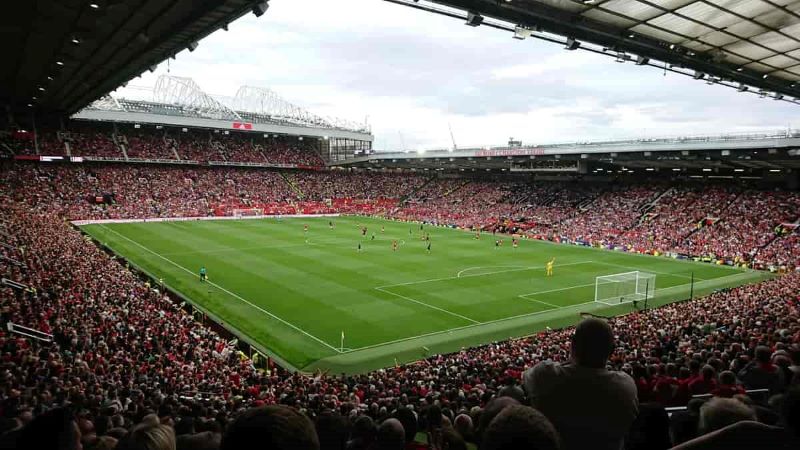Table of Contents
ToggleThe Premier League Manchester United Stadium, Old Trafford
One of the most popular Premier League stadiums, Old Trafford, the legendary football stadium located in Greater Manchester, England, has a special place in the hearts of football fans around the world. Known as the “Theatre of Dreams,” this iconic venue has been the home of Manchester United since 1910.
With a rich history, remarkable architecture, and a capacity to host over 74,000 spectators, Old Trafford is not just a stadium; it’s a symbol of football passion and excellence.
The History of Old Trafford
Old Trafford’s story began with the vision of one of the most popular Premier League football clubs, Manchester United’s chairman, John Henry Davies. In 1909, Davies recognized the need for a new stadium worthy of the club’s growing success. He commissioned Scottish architect Archibald Leitch, who was responsible for designing several other famous stadiums, to create a football haven. The site chosen, adjacent to the Bridgewater Canal, became the foundation for a masterpiece.
The stadium’s original plan aimed for a capacity of 100,000. However, because of the high costs, Old Trafford ultimately accommodated around 80,000. The opening game on February 19, 1910, marked the beginning of an era that would change football history. Despite suffering damage from World War II bombing, Old Trafford survived, and its reconstruction led to innovations in stand design.
Expansions and Developments
Throughout its existence, Old Trafford underwent several renovations. In the 1990s and 2000s, extra tiers were added to the North, West, and East Stands, almost restoring the stadium’s original capacity.
The iconic Sir Alex Ferguson Stand, named after the legendary manager, is a three-tiered marvel that dominates the North end of the ground. Its statue of Sir Alex Ferguson stands as a tribute to his unparalleled influence on Manchester United’s success.
The East Stand, opened in 2000, expanded the stadium further. It wasn’t just about capacity but also about creating an atmosphere that would inspire players and fans alike. The West Stand’s second tier followed suit, making Old Trafford the largest club stadium in the United Kingdom.
Unforgettable Moments
Old Trafford’s legacy goes beyond club matches. It has hosted FA Cup Finals, international fixtures, and significant tournaments. The 1966 World Cup, Euro 96, and the 2012 Summer Olympics brought a global spotlight to the stadium. In a historic moment, the 2003 Champions League Final between Milan and Juventus was played under its lights, showcasing the pinnacle of European club football.
Modern Transformations
In the 21st century, Old Trafford remains a stadium that adapts to modern demands. As football’s popularity surged, the stadium became a venue for the UEFA Women’s Euro 2022 and showed Manchester United’s women’s team. The Sir Bobby Charlton Stand, recognized in honor of a club legend, adds to the aura of the stadium.
Conclusion
Old Trafford isn’t just a stadium; it’s a living testament to football’s history, passion, and evolution. It’s a place where dreams have been realized, legends have been born, and where the heartbeats of countless fans resonate with each cheer and each goal.
As the “Theatre of Dreams,” Old Trafford continues to inspire generations, weaving a tapestry of football’s finest moments and keeping the spirit of Manchester United alive.


